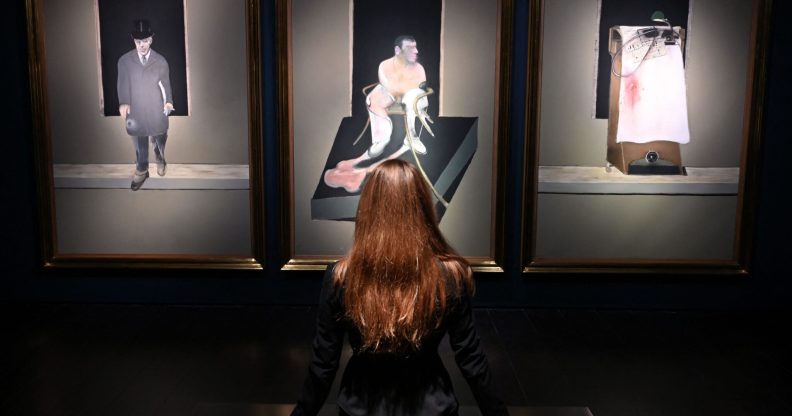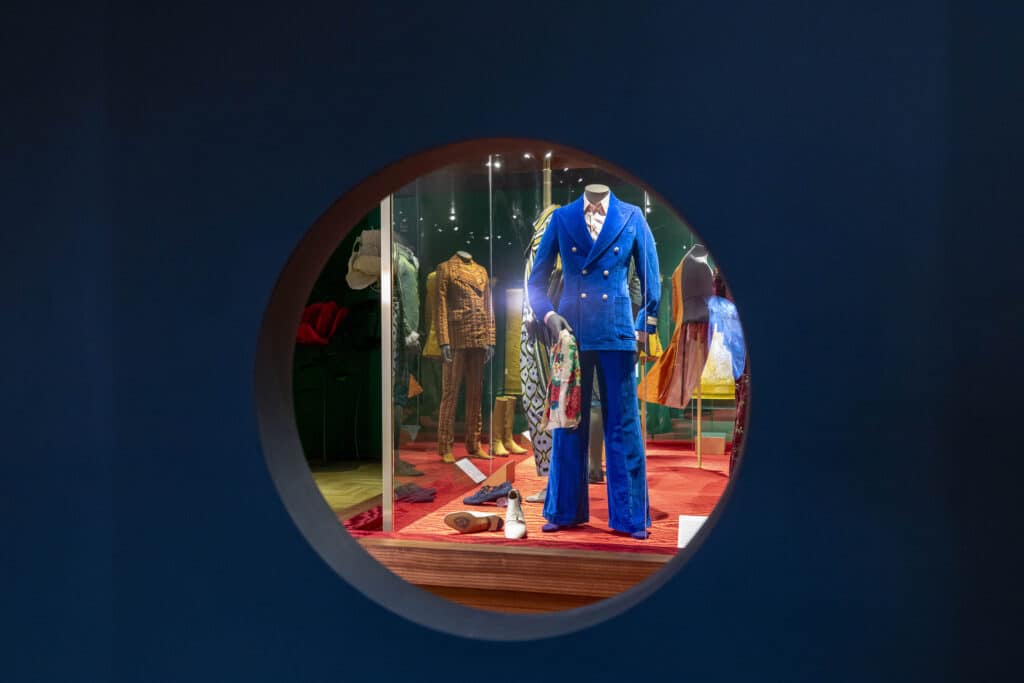Queer art dates back to the gender-fluid Roman gods – but it’s still not appreciated enough

British artist Francis Bacon is among one of the world’s most celebrated queer artists. (JUSTIN TALLIS/AFP via Getty Images)
Patrick McCrae, CEO of art expert collective ARTIQ, explains why supporting LGBTQ+ artists is as important today as it has been throughout history.
Right now, there are a number of beautifully curated queer artists on display at major galleries up and down the country.
Among them, Fashioning Masculinities at the V&A traces men’s fashion back to gender-fluid Roman gods, showing depictions of masculinity and its evolution through the ages, and it is striking to note how many are part of the queer community. That impact is still felt today, where we see depictions of masculinity manifest in different art forms, from Tom Ford and Dolce & Gabbana adverts to Matthew Bourne’s Spitfire, essentially a men’s underwear advert in ballet form.
At the Royal Academy, it’s impossible not to be moved by Francis Bacon‘s incredible retrospective and his 1954 piece “Two figures in the Grass”. It was painted just two years after Alan Turing died by suicide having suffered “chemical castration”, the penalty for homosexuality. It shows both how recently such abhorrent laws were in place, and how artists, especially queer artists, can violently challenge social norms.

The ‘Fashioning Masculinities’ exhibition at the V&A. (V&A)
While there are these high-profile examples, the queer community is severely under-represented across the art world. The Arts Council Diversity Report found that the total percentage of LGBTQ+ people in the portfolio’s workforce is six per cent, while theatre and visual arts had the highest percentage of LGBTQ+ workforce with nine per cent in each discipline.
Queer artists have so much to offer the creative sector, but unless we continue to work to redress the imbalance of diversity in our sector, we will not succeed in driving through real and meaningful change.
Effecting that change is one of the fundamental values of ARTIQ, the international art agency that I founded more than a decade ago. We’ve always wanted to shift the dial for LGBTQ+ artists and increase representation, and there are ways we can all ensure that we do so.
First and foremost, artists deserve to be paid for their work, and they deserve to be paid what they are worth.
A culture of exposure over income is an endemic issue in the creative sector, and people from less advantaged backgrounds are disproportionately penalised by that background. We need to ensure access for artists and arts professionals from a diverse range of backgrounds, and fair pay for creatives is at the heart of achieving that.
Then, there’s growing awareness of queer artists. There are so many brilliantly talented artists in the queer community, and we all have a responsibility to grow awareness of their works to raise their profile and drive demand for the art they create.
There is an appetite out there for queer artists but many people and businesses don’t know where to start when it comes to sourcing those works. We do a lot of work with corporate clients who want collections that reflect the diversity of their workforce and the local community.
Exceptional artwork will always stand out, and we strive to be a voice for positive change in ensuring that queer artists secure more opportunities.
Finding new places and ways to display queer art is crucial. Galleries and museums are important to the art world, and always will be. ARTIQ’s own annual charity exhibition, Queer Frontiers, will return in Pride Month and will be an incredible showcase of the artistic talent in the queer community.
But there are so many other ways to experience art, from public spaces to corporate workplaces, and we need to keep pushing the boundaries.
The challenge is to keep identifying talented upcoming artists and help them to carve a career. If we can continue to provide the right level of support, art has the power and platform to foster an atmosphere of acceptance and to catalyse real, positive change.

